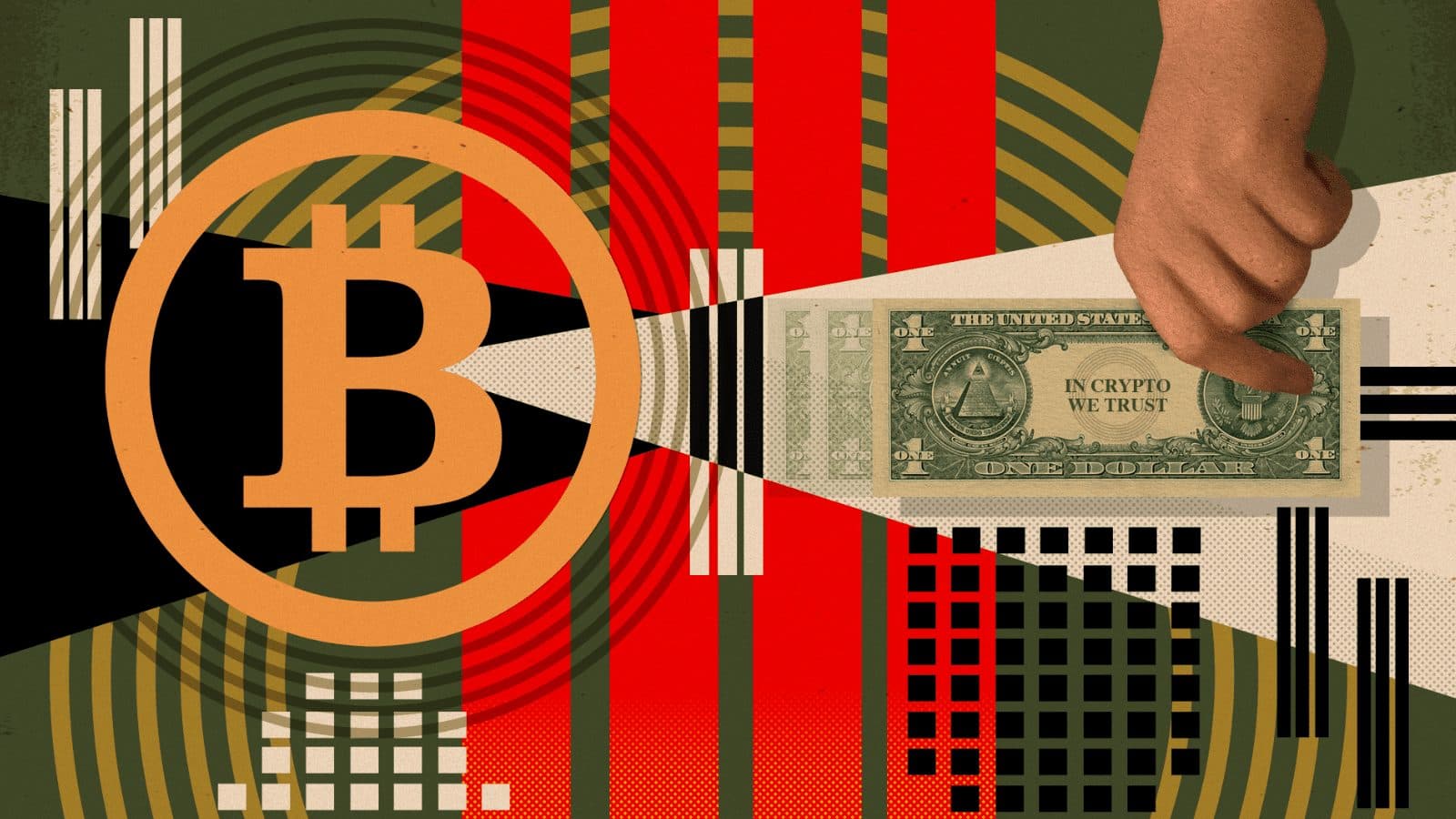Interest Rate Swaps Will Be ‘Catalyst for New Era of DeFi,’ Says Voltz CEO
Interest rate swaps help corporations, banks and nations manage their debt, and Voltz Labs is bringing them to DeFi

Blockworks exclusive art by axel rangel
- When trying to replicate interest rate swaps in DeFi, “you can’t just copy and paste the way it works in TradFi,” Voltz Lab CEO says
- New DeFi financial products allow for a greater range of financial services and trading capabilities for users
Interest rate swaps grease the wheels of traditional finance. With a market size of $1,000 trillion, it helps corporations, banks and nations manage their debt. Investors who use this derivative can exchange an asset’s interest rate with another party. Fundamentally, it provides scalability and complexity to a global financial system.
Some argue the inability to create decentralized interest rate swaps has inhibited the same scalability and complexity needed for the DeFi sector to grow.
For more on the importance of interest rate swaps and the implications of their inclusion into DeFi, we spoke with Simon Jones, CEO of Voltz Labs — a pioneer in decentralized interest rate swaps for DeFi.
What are interest rate swaps?
An interest rate swap in traditional finance is a derivative contract that consists of two counterparties agreeing to exchange (or “swap”) one flow of future interest payments for another. Both parties agree they would prefer the other’s interest rate arrangement, and so they both enter into a contract to swap future interest payments with each other. Swaps usually involve the exchange of a variable or “floating” interest rate for a fixed interest rate.
A variable rate will see increased returns if interest rates rise, while a fixed rate will see diminishing returns relative to the variable one.
The significance of interest rate swaps
Whether you’re familiar with such swaps or not, they provide the necessary mechanism for many modern financial products.
Interest rate swaps “support a wide set of use cases across speculation, risk management, and product construction. This includes structured products for corporates and fixed-rate mortgages for retail,” Jones said.
He added that it would be much more difficult to “address the financial needs of the system” without interest rate swaps.
The challenge of introducing swaps into DeFi
Things work differently in the permissionless, decentralized world of DeFi. Constructing DeFi derivatives is a relatively new concept that presents some unique challenges.
Jones noted that when trying to replicate interest rate swaps in DeFi, “you can’t just copy and paste the way it works in TradFi.”
One of the reasons for this involves the legal framework surrounding counterparty risk in traditional finance. Such swaps come with the risk of the counterparty defaulting on their debt, in which case, it would be difficult for the other party to collect what they are owed. In traditional markets, a set of rules and regulations are put in place to deal with such a situation, should it arise.
No such framework exists for DeFi. But industry leaders can build systems in such a way as to make that framework unnecessary.
As Jones put it, “when entering into a swap in traditional finance, you have counterparty risk since it’s a swap with another party. So they created a whole legal framework, including the use of rating agencies, to support this. DeFi, however, is very different. Instead of having mechanisms for what to do when a counterparty fails, we’ve built a system that removes counterparty risk, meaning it can’t fail in the first place.”
In addition, he added that considering the utility these instruments provide and working out ways to “deliver the same utility in an environment with different constraints” took about six months of research.
A new era of DeFi
What do interest rate swaps in DeFi mean for the marketplace?
According to Jones, “a spectrum of complexity” surrounds financial product construction. Introducing interest rate swaps to DeFi will open a flood gate of participants ranging from sophisticated speculators to institutions and retail investors.
On the most basic end of that complexity, interest rate swaps in DeFi unlock fixed rate products. For the first time, DeFi users can now take assets with variable rates of return and turn them into fixed-rate assets. Until recently, DeFi users seeking yield have been subject to interest rates that can fluctuate wildly.
Moving toward more complex financial instruments, Voltz Protocol can also “unlock products like interest rate caps, floors, covered call payouts, fixed-rate mortgages, swaptions,” and more. These allow for a greater range of financial services and trading capabilities for DeFi users.
Jones noted that “teams are building many of these [DeFi financial products] alongside more innovative uses, such as using fixed-rate assets as a form of stablecoin collateralization.” With recent events in the crypto space, new ways of collateralizing stablecoins will surely interest many. They could be a big help for the development of decentralized markets.
This content is sponsored by Voltz Labs.
Get the news in your inbox. Explore Blockworks newsletters:
- The Breakdown: Decoding crypto and the markets. Daily.
- 0xResearch: Alpha in your inbox. Think like an analyst.






